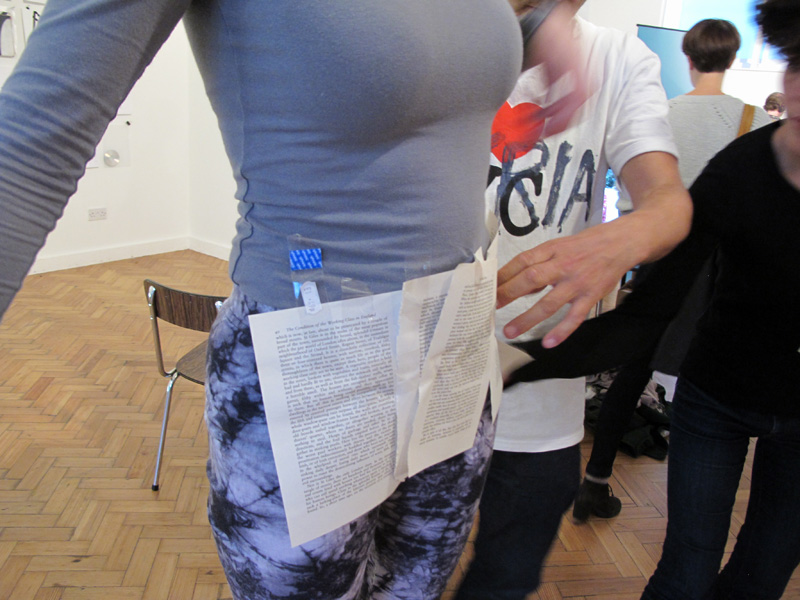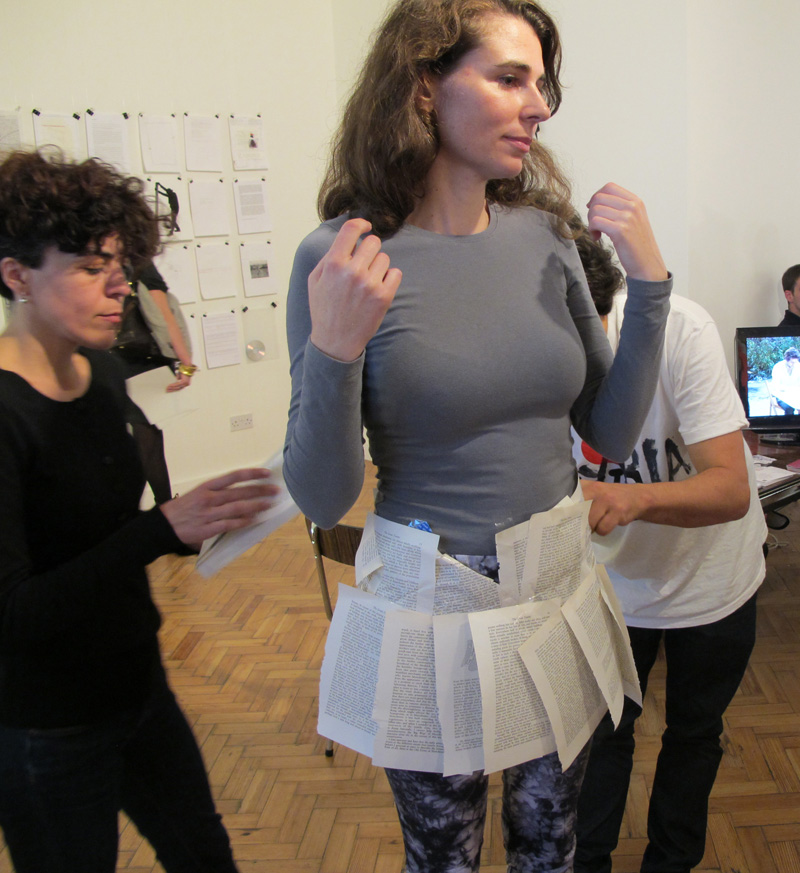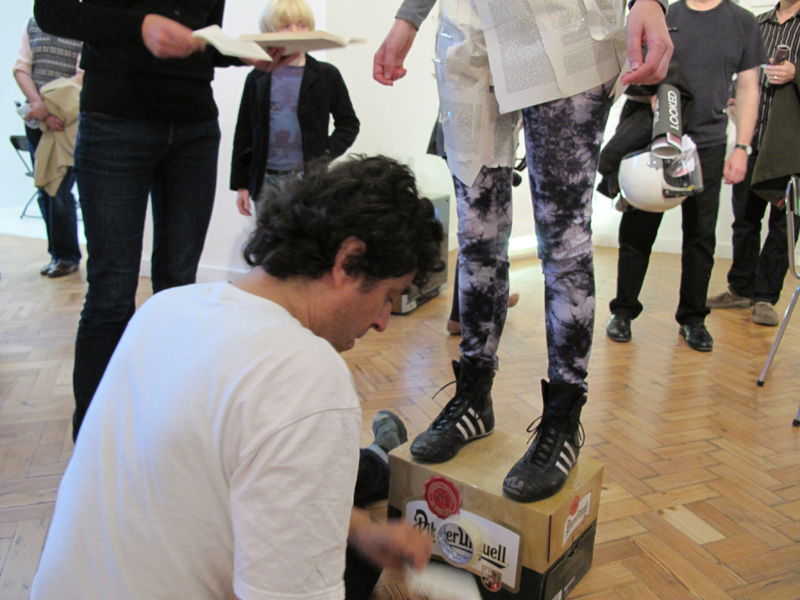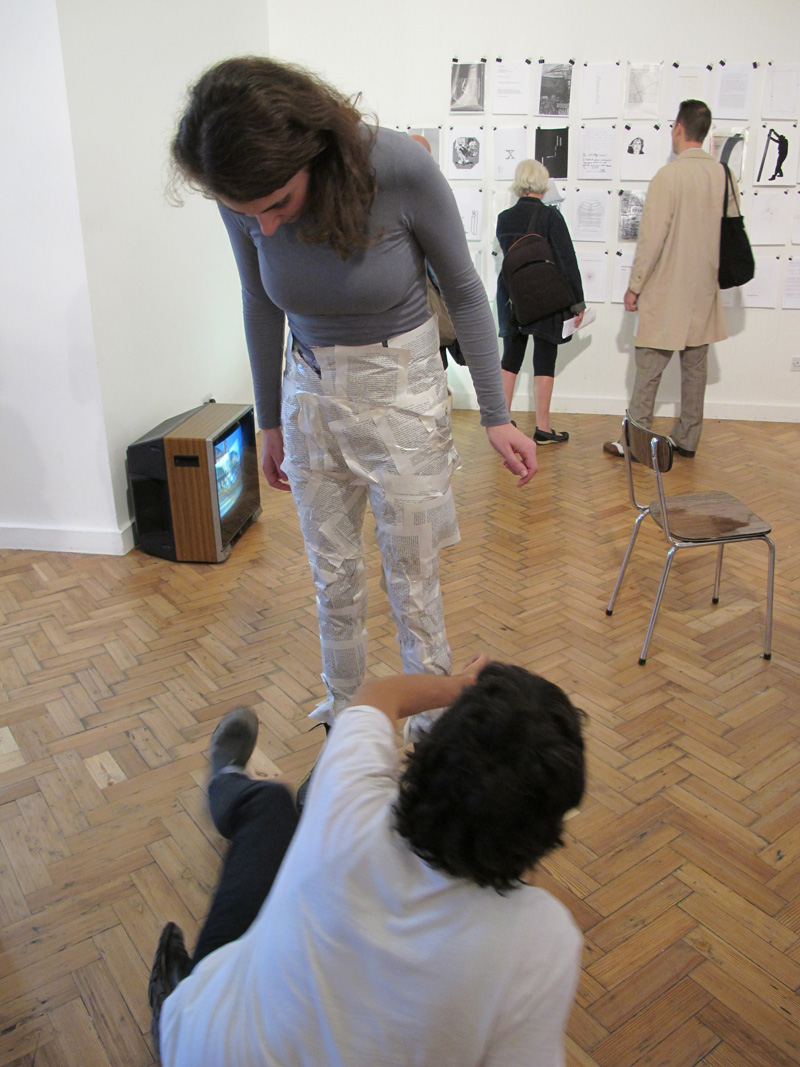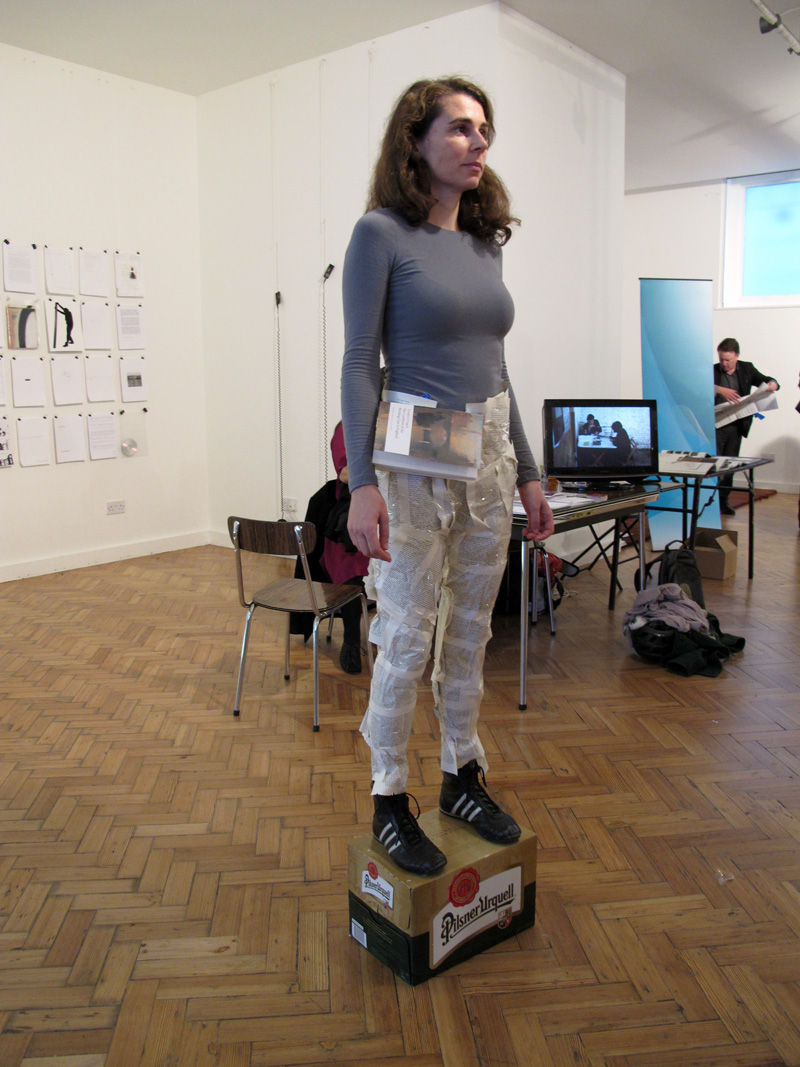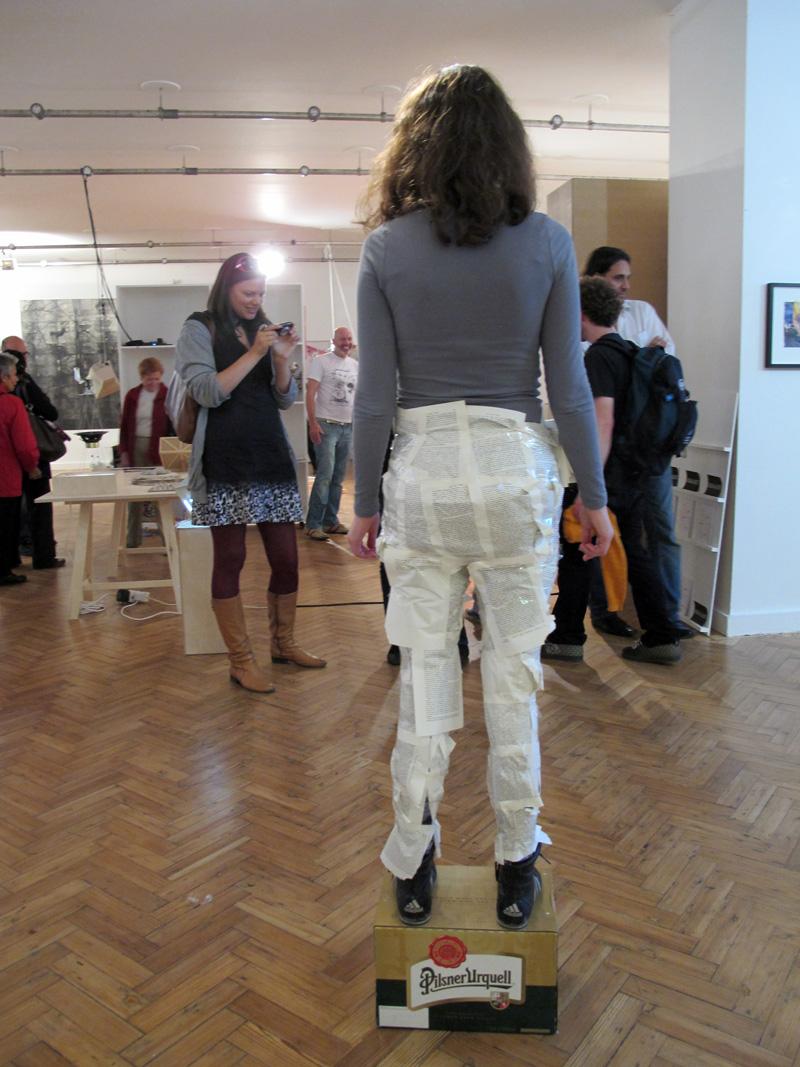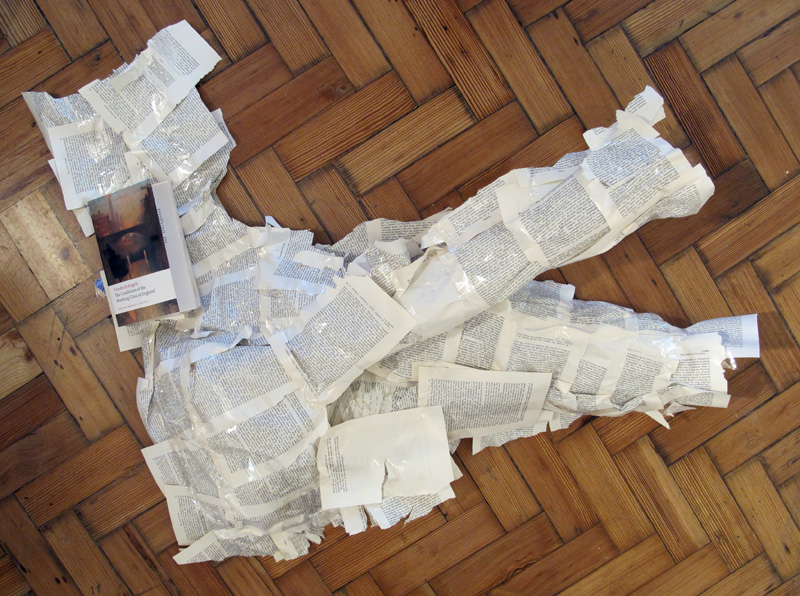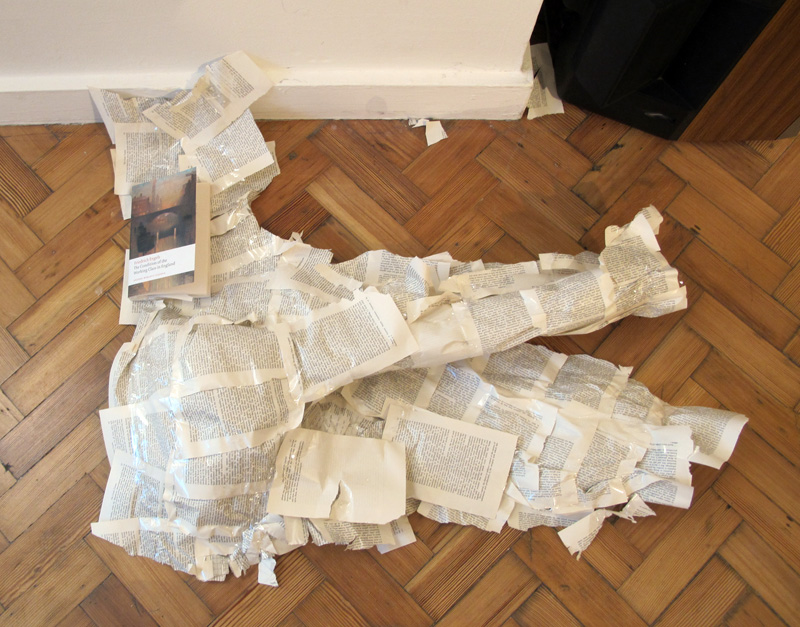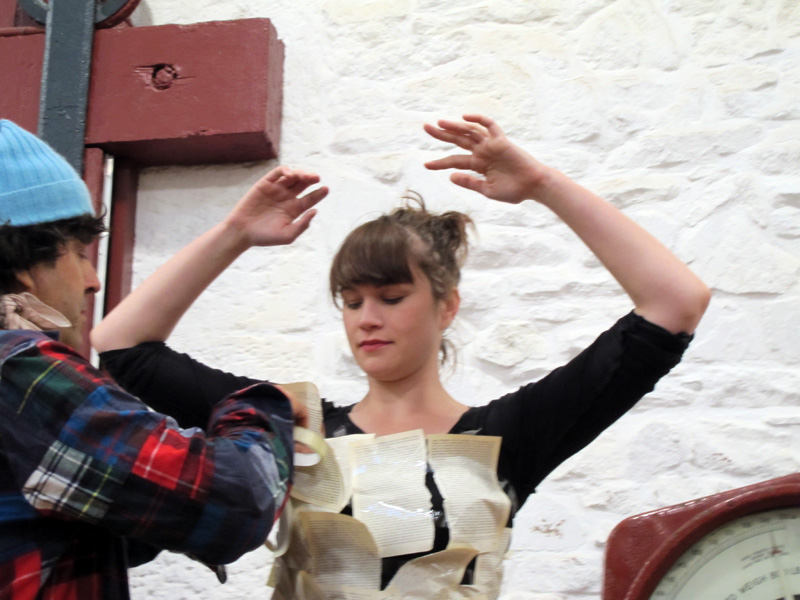THE CONDITION OF THE WORKING CLAS IN ENGLAND - THE FUSTIAN DRESS - Devil's dust
dress and performance
Engels text is very specific about the conditoin of the working class while he was writing the text. he also paid attention to the dressing of the working class and describes a new style of dressing people refered t as FUSTIAN: a combnation of all kind of heterogenious materials including newspapers and trash. in spite of the fact that the workers made textiles and fabrics, wool disappeared as a dress and was replaced by the much colder inferior cotton ... but everything only in pieces all mixed together.
For this performance in Manchester I dressed up a woman with a German editoin of the Condition of the Working class in England.
Mancheter, Burry,, 2011
here from the text:
We must add that many families, who had but one room for themselves, receive boarders and lodgers in it, that such lodgers of both sexes by no means rarely sleep in the same bed with the married couple; and that the single case of a man and his wife and his adult sister-in-law sleeping in one bed was found, according to the "Report on the Sanitary Condition of the Labouring Population", six times repeated in Manchester. Common lodging-houses, too, are very numerous; Dr. Kay gives their number in 1831 as 267 in Manchester proper, and they must have increased greatly since then. Each of these receives from twenty to thirty guests, so that they shelter all told, nightly, from five to seven thousand human beings. The character of the houses and their guests is the same as in other cities. Five to seven beds in each room lie on the floor – without bedsteads, and on these sleep, mixed indiscriminately, as many persons as apply. What physical and moral atmosphere reigns in these holes I need not state. Each of these houses is a focus of crime, the scene of deeds against which human nature revolts, which would perhaps never have been executed but for this forced centralisation of vice. Gaskell [13] gives the number of persons living in cellars in Manchester proper as 20,000. The Weekly Dispatch gives the number, "according to official reports", as twelve per cent of the working-class, which agrees with Gaskell's number; the workers being estimated at 175,000, 21,000 would form twelve per cent of it. The cellar dwellings in the suburbs are at least as numerous. so that the number of persons living in cellars in Manchester – using its name in the broader sense – is not less than forty to fifty thousand. So much for the dwellings of the workers in the largest cities and towns. The manner in which the need of a shelter is satisfied furnishes a standard for the manner in which all other necessities are supplied. That in these filthy holes a ragged, ill-fed population alone can dwell is a safe conclusion, and such is the fact. The clothing of the working-people, in the majority of cases, is in a very bad condition. The material used for it is not of the best adapted. Wool and linen have almost vanished from the wardrobe of both sexes, and cotton has taken their place. Shirts are made of bleached or coloured cotton goods; the dresses of the women are chiefly of cotton print goods, and woollen petticoats are rarely to be seen on the washline. The men wear chiefly trousers of fustian or other heavy cotton goods, and jackets or coats of the same. Fustian has become the proverbial costume of the working-men, who are called "fustian jackets", and call themselves so in contrast to the gentlemen who wear broadcloth, which latter words are used as characteristic for the middle-class. When Feargus O'Connor, the Chartist leader, came to Manchester during the insurrection of 1842, he appeared, amidst the deafening applause of the working-men, in a fustian suit of clothing. Hats are the universal head-covering in England, even for working-men, hats of the most diverse forms, round, high, broad-brimmed, narrow- brimmed, or without brims – only the younger men in factory towns wearing caps. Any one who does not own a hat folds himself a low, square paper cap.
The whole clothing of the working-class, even assuming it to be in good condition, is little adapted to the climate. The damp air of England, with its sudden changes of temperature, more calculated than any other to give rise to colds, obliges almost the whole middle-class to wear flannel next to the skin, about the body, and flannel scarfs and shirts are in almost universal use. Not only is the working-class deprived of this precaution, it is scarcely ever in a position to use a thread of woollen clothing; and the heavy cotton goods, though thicker, stiffer, and heavier than woollen clothes, afford much less protection against cold and wet, remain damp much longer because of their thickness and the nature of the stuff, and have nothing of the compact density of fulled woollen cloths. And, if a working-man once buys himself a woollen coat for Sunday, he must get it from one of the "cheap shops" where he finds bad, so-called "Devil's-dust" cloth, manufactured for sale and not for use, and liable to tear or grow threadbare in a fortnight, or he must buy of an old clothes'-dealer a half-worn coat which has seen its best days, and lasts but a few weeks. Moreover, the working-man's clothing is, in most cases, in bad condition, and there is the oft-recurring necessity for placing the best pieces in the pawnbroker's shop. But among very large numbers, especially among the Irish, the prevailing clothing consists of perfect rags often beyond all mending, or so patched that the original colour can no longer be detected. Yet the English and Anglo-Irish go on patching, and have carried this art to a remarkable pitch, putting wool or bagging on fustian, or the reverse – it's all the same to them. But the true, transplanted Irish hardly ever patch except in the extremest necessity, when the garment would otherwise fall apart. Ordinarily the rags of the shirt protrude through the rents in the coat or trousers. They wear, as Thomas Carlyle says, [14]
"a suit of tatters, the getting on or off which is said to be a difficult operation, transacted only in festivals and the high tides of the calendar."
The Irish have introduced, too, the custom, previously unknown in England, of going barefoot. In every manufacturing town there is now to be seen a multitude of people, especially women and children, going about barefoot, and their example is gradually being adopted by the poorer English.
. 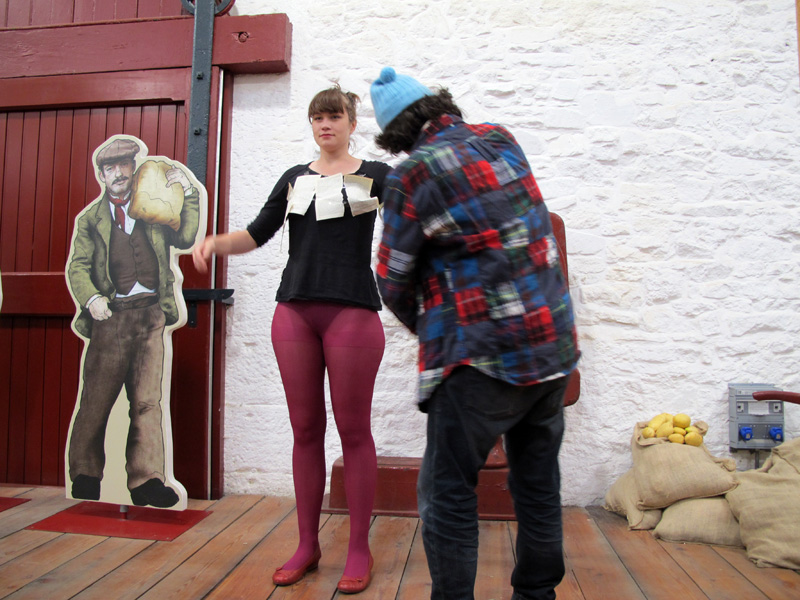 .
.
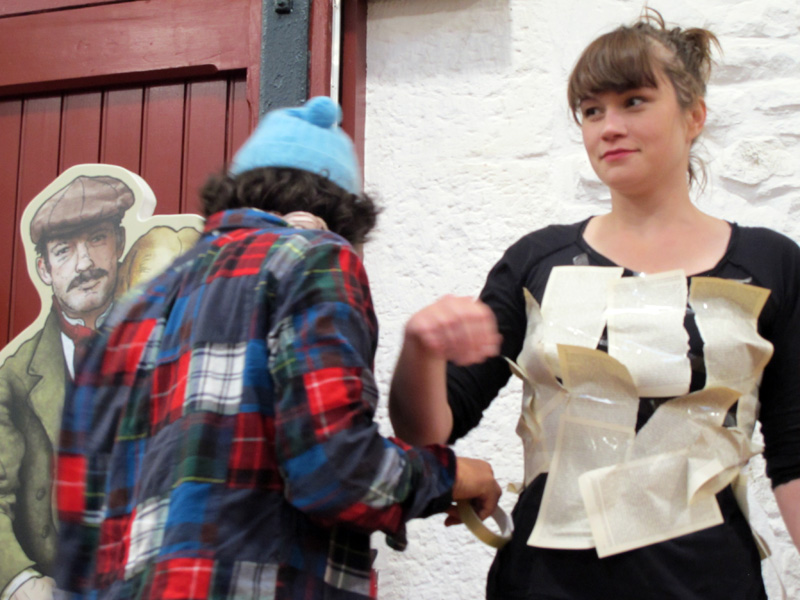
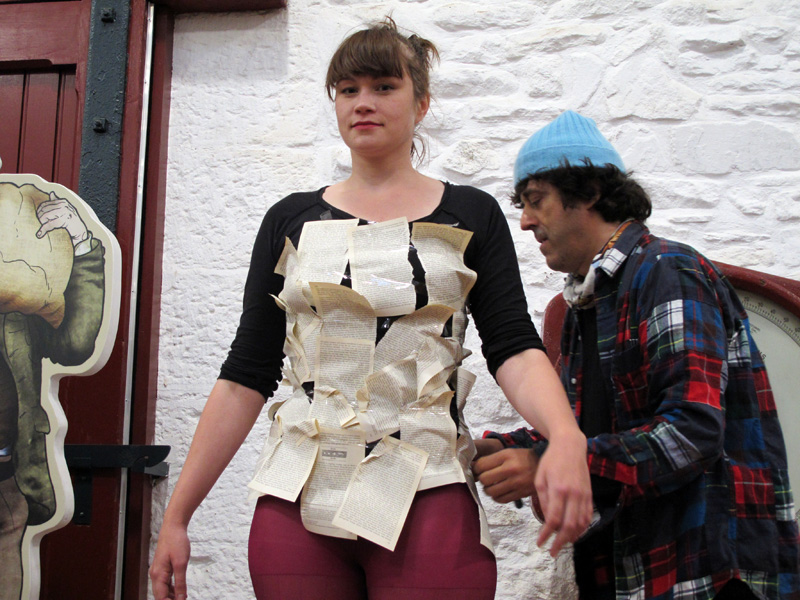

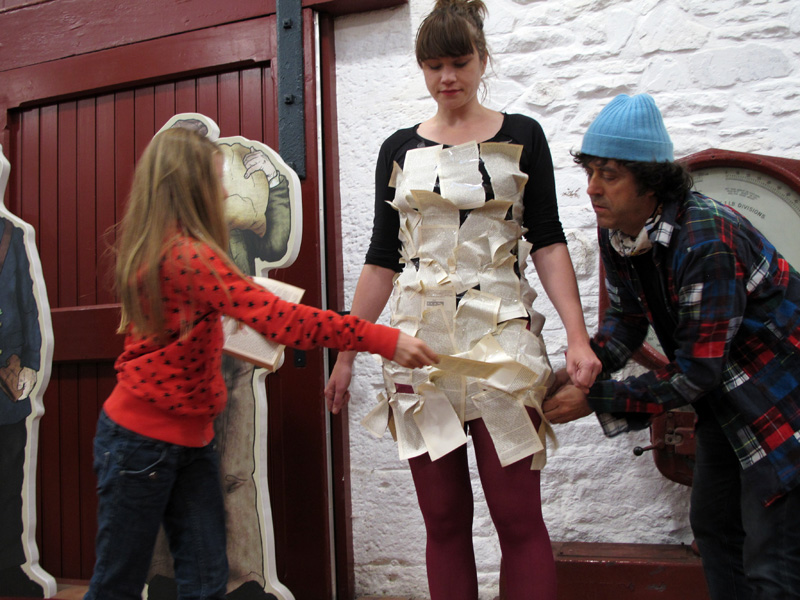

. 
A second performance was during Frieze Art Fair London, 2011 - for Sluice Art Fair (for artist run spaces only) / with Modern Language Experiment, London
